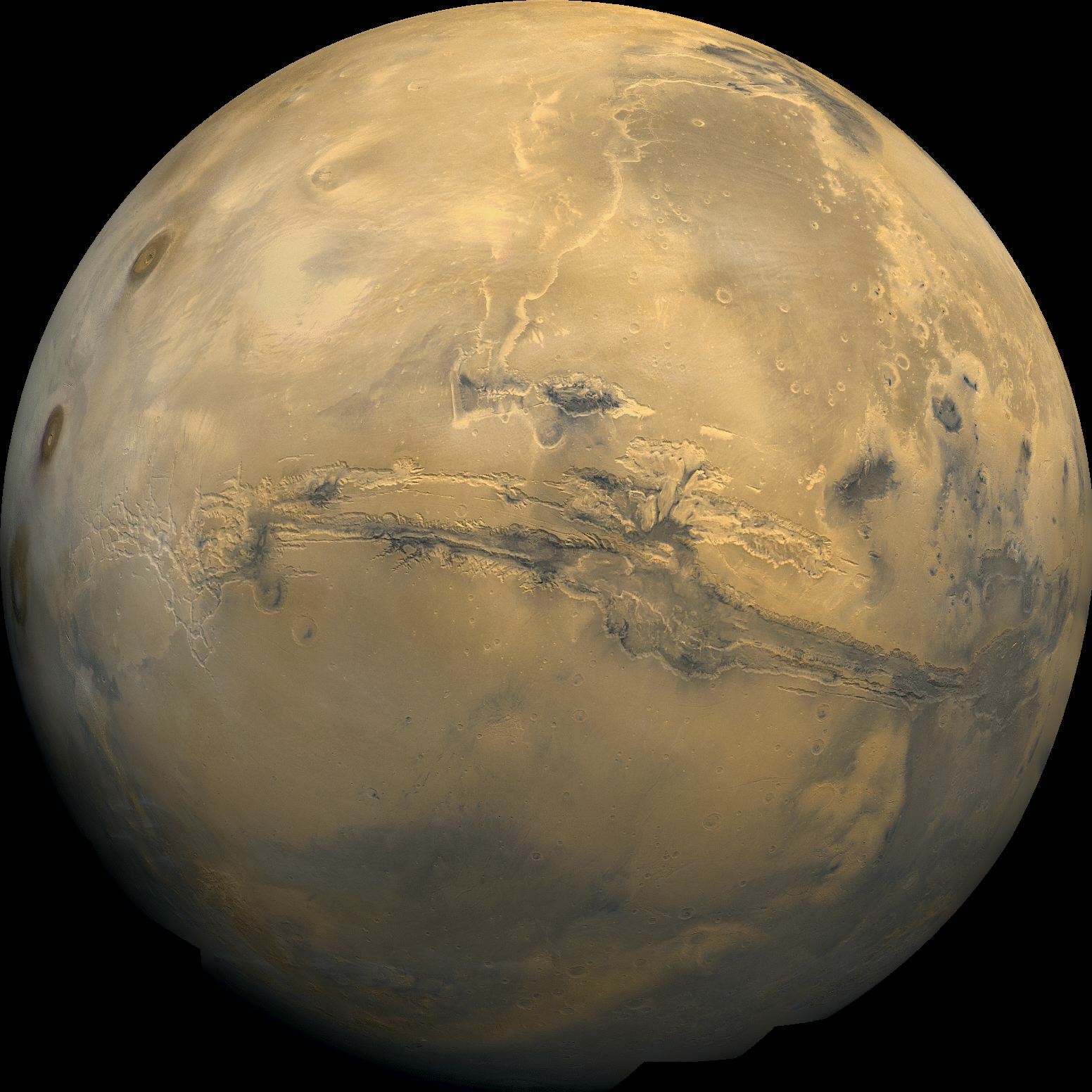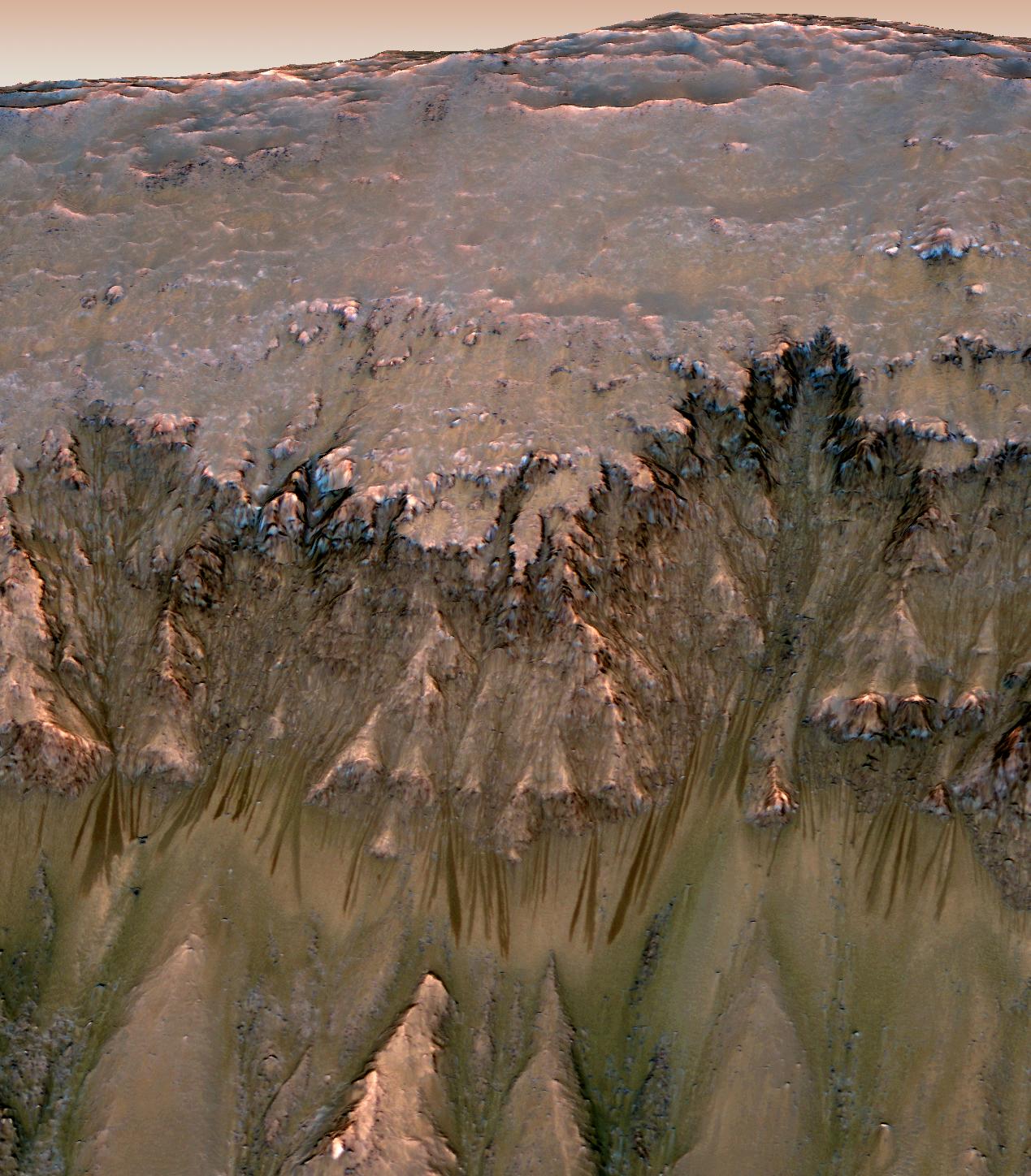|
Horowitz (crater)
Horowitz is a crater in the Terra Cimmeria region of the southern highlands of Mars. Cartographically, it is located within the Eridania quadrangle. Horowitz crater has a diameter of 65 km. Its name refers to the American geneticist Norman H. Horowitz. Geology Poleward-facing gullies have been identified against the northern rim of Horowitz crater. Recurring slope lineae In 2011 it was announced that images captured by NASA's Mars Reconnaissance Orbiter have suggested the presence of possible flowing water during the warmest months on Mars, as shown in images taken of Newton Newton most commonly refers to: * Isaac Newton (1642–1726/1727), English scientist * Newton (unit), SI unit of force named after Isaac Newton Newton may also refer to: Arts and entertainment * ''Newton'' (film), a 2017 Indian film * Newton ( ... and Horowitz craters among others. See also * List of craters on Mars: H-N References {{Portal bar, Solar System Eridania quadrangle ... [...More Info...] [...Related Items...] OR: [Wikipedia] [Google] [Baidu] |
Viking Program
The ''Viking'' program consisted of a pair of identical American space probes, ''Viking 1'' and ''Viking 2'', which landed on Mars in 1976. Each spacecraft was composed of two main parts: an orbiter designed to photograph the surface of Mars from orbit, and a lander designed to study the planet from the surface. The orbiters also served as communication relays for the landers once they touched down. The Viking program grew from NASA's earlier, even more ambitious, Voyager Mars program, which was not related to the successful Voyager deep space probes of the late 1970s. ''Viking 1'' was launched on August 20, 1975, and the second craft, ''Viking 2'', was launched on September 9, 1975, both riding atop Titan IIIE rockets with Centaur upper stages. ''Viking 1'' entered Mars orbit on June 19, 1976, with ''Viking 2'' following on August 7. After orbiting Mars for more than a month and returning images used for landing site selection, the orbiters and landers detached; the lander ... [...More Info...] [...Related Items...] OR: [Wikipedia] [Google] [Baidu] |
Mars
Mars is the fourth planet from the Sun and the second-smallest planet in the Solar System, only being larger than Mercury (planet), Mercury. In the English language, Mars is named for the Mars (mythology), Roman god of war. Mars is a terrestrial planet with a thin atmosphere (less than 1% that of Earth's), and has a crust primarily composed of elements similar to Earth's crust, as well as a core made of iron and nickel. Mars has surface features such as impact craters, valleys, dunes and polar ice caps. It has two small and irregularly shaped moons, Phobos (moon), Phobos and Deimos (moon), Deimos. Some of the most notable surface features on Mars include Olympus Mons, the largest volcano and List of tallest mountains in the Solar System, highest known mountain in the Solar System and Valles Marineris, one of the largest canyons in the Solar System. The North Polar Basin (Mars), Borealis basin in the Northern Hemisphere covers approximately 40% of the planet and may be a la ... [...More Info...] [...Related Items...] OR: [Wikipedia] [Google] [Baidu] |
Norman H
Norman or Normans may refer to: Ethnic and cultural identity * The Normans, a people partly descended from Norse Vikings who settled in the territory of Normandy in France in the 10th and 11th centuries ** People or things connected with the Norman conquest of southern Italy in the 11th and 12th centuries ** Norman dynasty, a series of monarchs in England and Normandy ** Norman architecture, romanesque architecture in England and elsewhere ** Norman language, spoken in Normandy ** People or things connected with the French region of Normandy Arts and entertainment * ''Norman'' (film), a 2010 drama film * '' Norman: The Moderate Rise and Tragic Fall of a New York Fixer'', a 2016 film * ''Norman'' (TV series), a 1970 British sitcom starring Norman Wisdom * ''The Normans'' (TV series), a documentary * "Norman" (song), a 1962 song written by John D. Loudermilk and recorded by Sue Thompson * "Norman (He's a Rebel)", a song by Mo-dettes from ''The Story So Far'', 1980 Businesses * ... [...More Info...] [...Related Items...] OR: [Wikipedia] [Google] [Baidu] |
Terra Cimmeria
Terra Cimmeria is a large Martian region, centered at and covering at its broadest extent. It covers latitudes 15 N to 75 S and longitudes 170 to 260 W. It lies in the Eridania quadrangle. Terra Cimmeria is one part of the heavily cratered, southern highland region of the planet. The Spirit rover landed near the area. The word Cimmerium comes from an ancient Thracian seafaring people. The land was always covered in clouds and mist. A high altitude visual phenomena, probably a condensation cloud, was seen above this region in late March 2012. NASA tried to observe it with some of its Mars orbiters, including the THEMIS instrument on the 2001 Mars Odyssey spacecraft and MARCI on the Mars Reconnaissance Orbiter. Martian gullies Terra Cimmeria is the location of gullies that may be due to recent flowing water. Gullies occur on steep slopes, especially on the walls of craters. Gullies are believed to be relatively young because they have few if any craters. Moreover, they lie o ... [...More Info...] [...Related Items...] OR: [Wikipedia] [Google] [Baidu] |
Eridania Quadrangle
The Eridania quadrangle is one of a series of 30 quadrangle maps of Mars used by the United States Geological Survey (USGS) Astrogeology Research Program. The Eridania quadrangle is also referred to as MC-29 (Mars Chart-29). The Eridania quadrangle lies between 30° and 65° south latitude and 180° and 240° west longitude on the planet Mars. Most of the classic region named Terra Cimmeria is found within this quadrangle. Part of the Electris deposits, a 100–200 meters thick, light-toned deposit covers the Eridania quadrangle. Many slopes in Eridania contain gullies, which are believed to be caused by flowing water. Martian Gullies The Eridania quadrangle is the location of gullies that may be due to recent flowing water. Gullies occur on steep slopes, especially on the walls of craters. Gullies are believed to be relatively young because they have few, if any craters. Moreover, they lie on top of sand dunes which themselves are considered to be quite young. Usually, eac ... [...More Info...] [...Related Items...] OR: [Wikipedia] [Google] [Baidu] |
Mars Reconnaissance Orbiter
''Mars Reconnaissance Orbiter'' (MRO) is a spacecraft designed to study the geology and climate of Mars, provide reconnaissance of future landing sites, and relay data from surface missions back to Earth. It was launched on August 12, 2005, and reached Mars on March 10, 2006. In November 2006, after five months of aerobraking, it entered its final science orbit and began its primary science phase. The cost to develop and operate MRO through the end of its prime mission in 2010 was . The spacecraft continues to operate at Mars, far beyond its intended design life. Due to its critical role as a high-speed data-relay for ground missions, NASA intends to continue the mission as long as possible, at least through the late 2020s. Pre-launch After the twin failures of the ''Mars Climate Orbiter'' and the Mars Polar Lander missions in 1999, NASA reorganized and replanned its Mars Exploration Program. In October 2000, NASA announced its reformulated Mars plans, which reduced the numb ... [...More Info...] [...Related Items...] OR: [Wikipedia] [Google] [Baidu] |
Seasonal Flows On Warm Martian Slopes
Seasonal flows on warm Martian slopes (also called recurring slope lineae, recurrent slope lineae and RSL) are thought to be salty water flows occurring during the warmest months on Mars, or alternatively, dry grains that "flow" downslope of at least 27 degrees. The flows are narrow (0.5 to 5 meters) and exhibit relatively dark markings on steep slopes, appear and incrementally grow during warm seasons and fade in cold seasons. Liquid brines near the surface have been proposed to explain this activity, or interactions between sulfates and chlorine salts that interact under to produce landslides. Overview Research indicates that in the past there was liquid water flowing on the surface of Mars, creating large areas similar to Earth's oceans. However, the question remains as to where the water has gone. The ''Mars Reconnaissance Orbiter'' (MRO) is a multipurpose spacecraft launched in 2005 designed to conduct reconnaissance and exploration of Mars from orbit. The spacecraft is ma ... [...More Info...] [...Related Items...] OR: [Wikipedia] [Google] [Baidu] |
Newton (Martian Crater)
Newton is a large crater on Mars, with a diameter close to 300 km. It is located south of the planet's equator in the heavily cratered highlands of Terra Sirenum in the Phaethontis quadrangle. The crater was named in 1973 by the International Astronomical Union (IAU) Working Group for Planetary System Nomenclature (WGPSN) in honor of British physicist Sir Isaac Newton. Three smaller craters within Newton have been named. Avire is to the west of the central peak. Palikir and Dechu are to the southeast of the central peak. Description The impact that formed Newton likely occurred more than 3 billion years ago. The crater contains smaller craters within its basin and is particularly notable for gully formations that are presumed to be indicative of past liquid water flows. Many small channels exist in this area; they are further evidence of liquid water. On the basis of their form, aspects, positions, and location amongst and apparent interaction with features thought to be ... [...More Info...] [...Related Items...] OR: [Wikipedia] [Google] [Baidu] |





